This idea comes from Tim Yarzhombek, you can read more about it here.
Training exactly.ai models on unconventional source material can generate some fascinating results. Tim Yarzhombek noticed the similarity between linocut strokes and human fingerprint patterns. As an experiment, he tried uploading a dataset of fingerprints to train a model and got some excellent results.
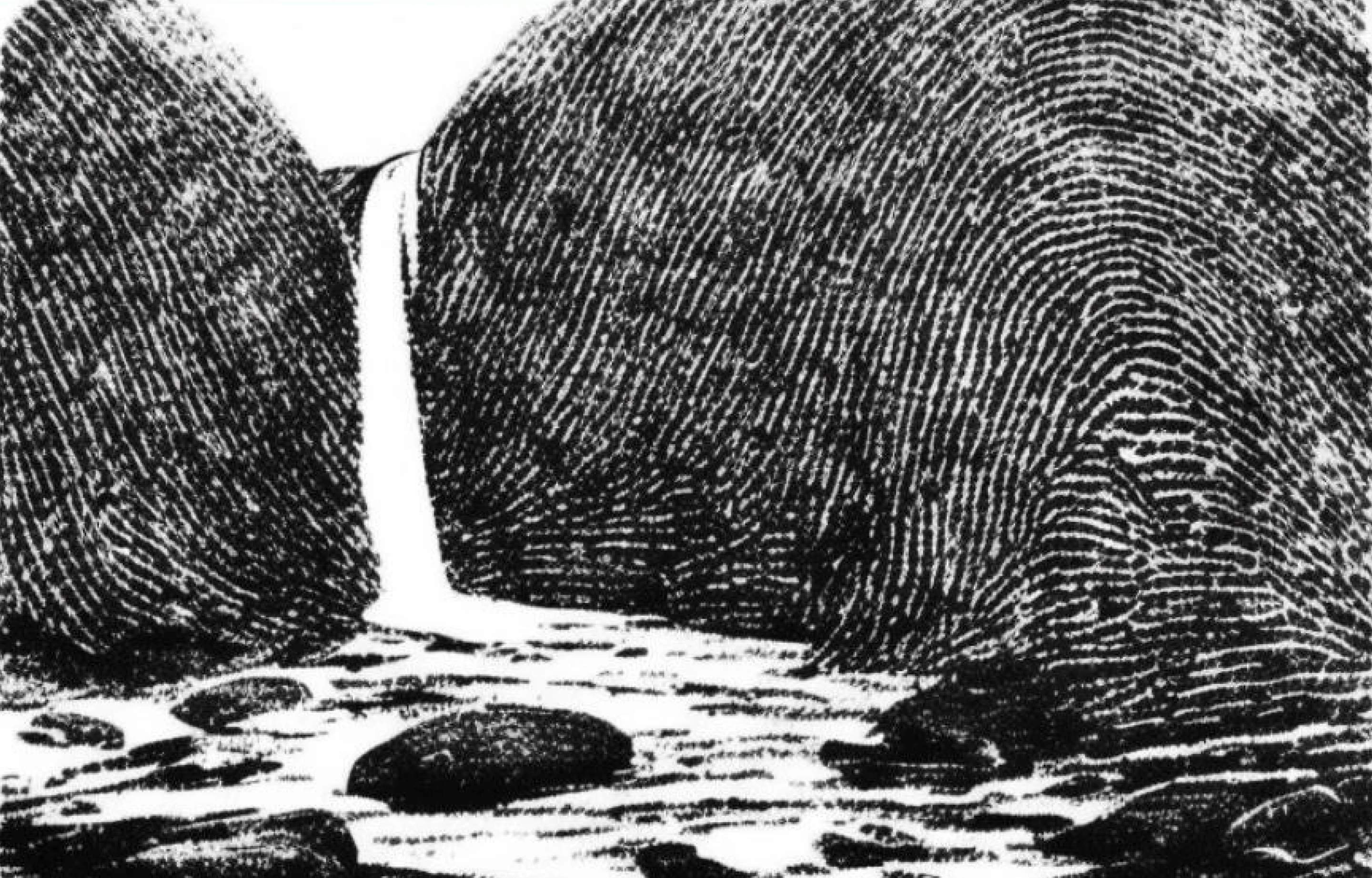
To build his dataset Tim downloaded open source images of fingerprints from the internet. He made sure to get large enough resolutions (over 512x512) to ensure he didn't lose the detail of the fingerprints.
He also searched specifically for linear graphics - this allowed him to increase the contrast on the images to make the prints clearer.
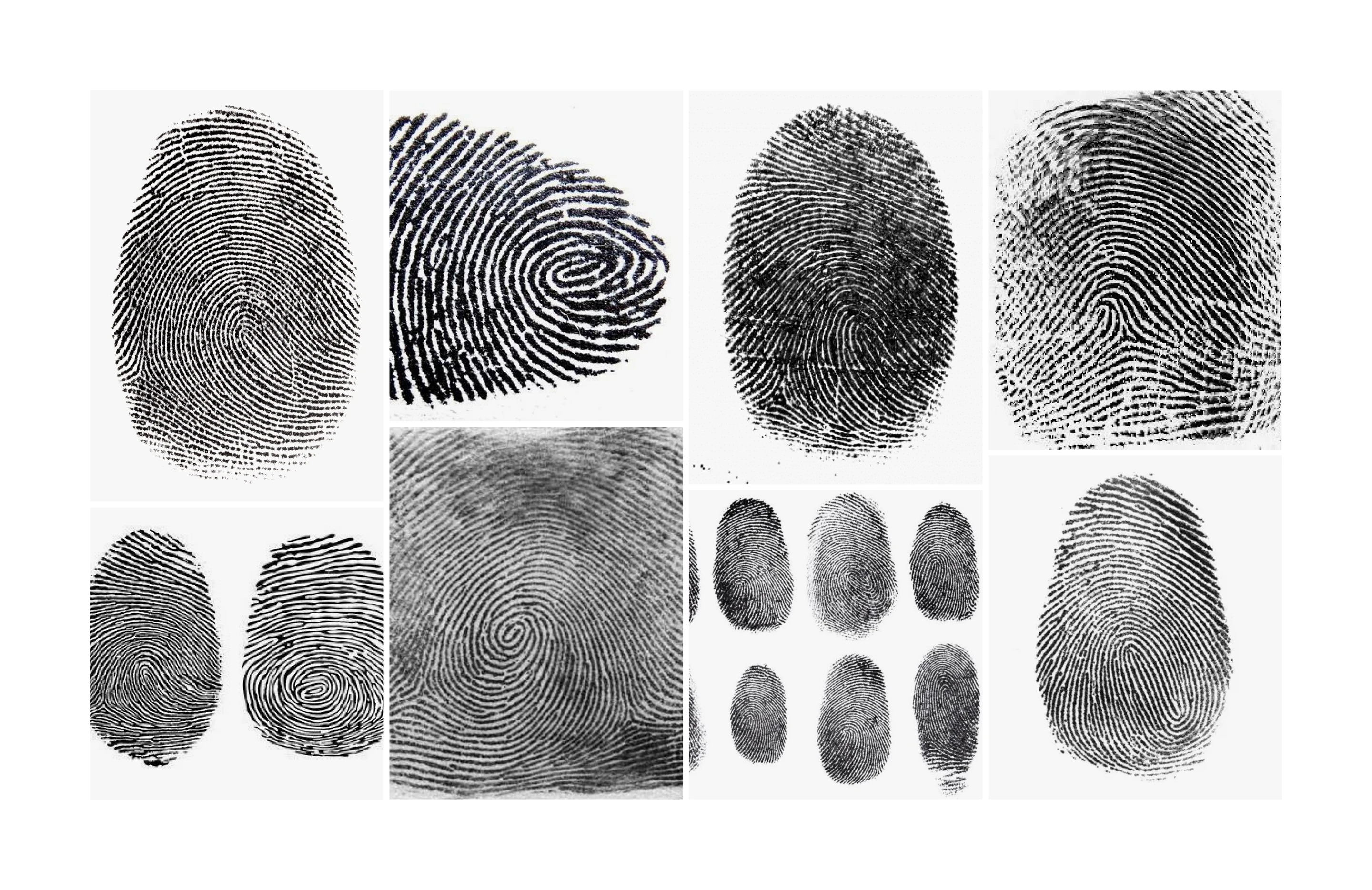
Tim recommends testing his models at the start with basic prompts e.g. man, face, cat and dog.
It’s best to test your first batch of generations with some basic prompts. Below, we see man, face, cat, and dog. These didn't turn out that similar to my original images, but you can spot a little flavour of the fingerprints in the brush strokes.
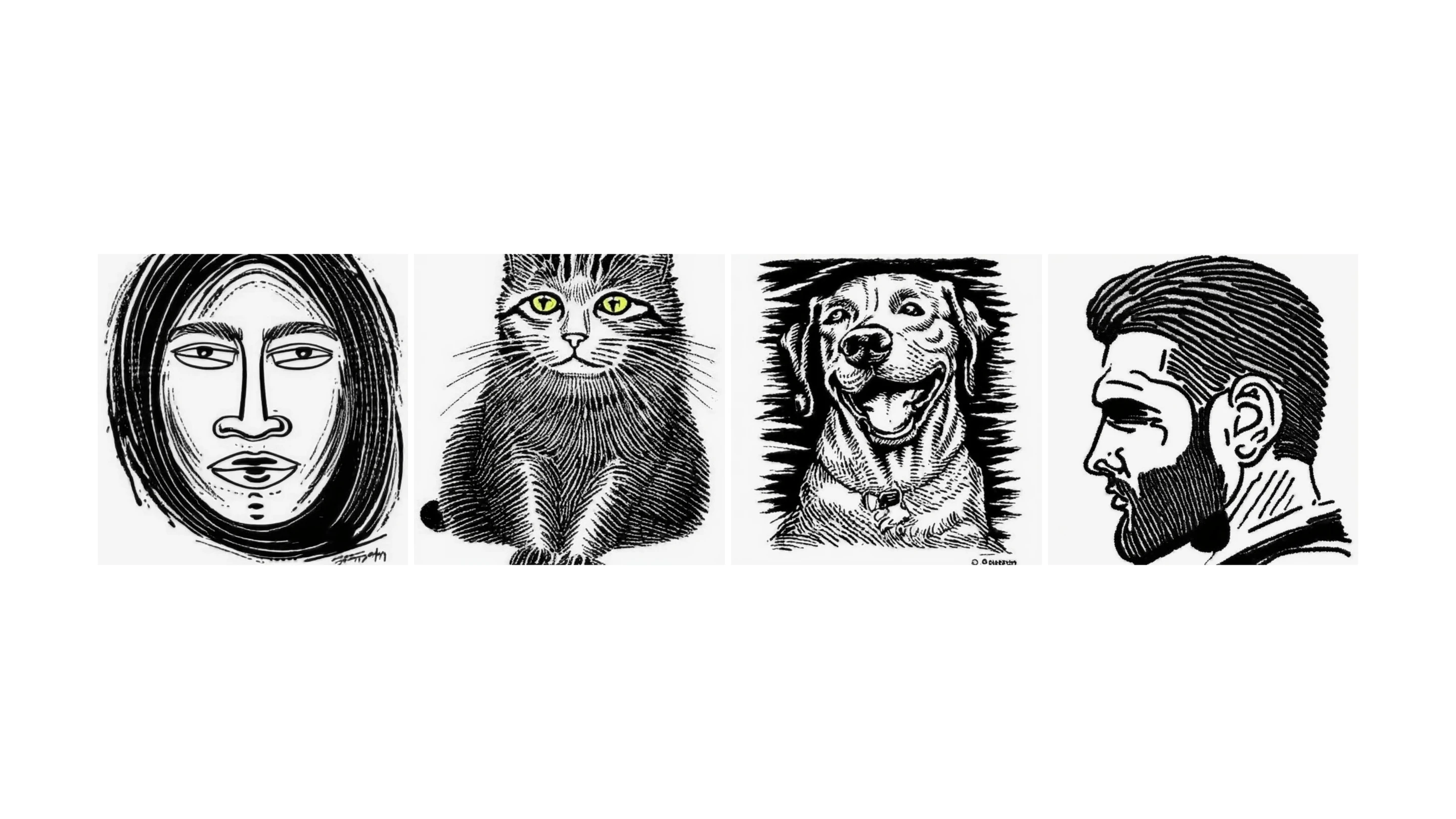
Although Tim's first prompts didn't quite work he kept going, trying some others like "landscape" and "mountain" which got better results.
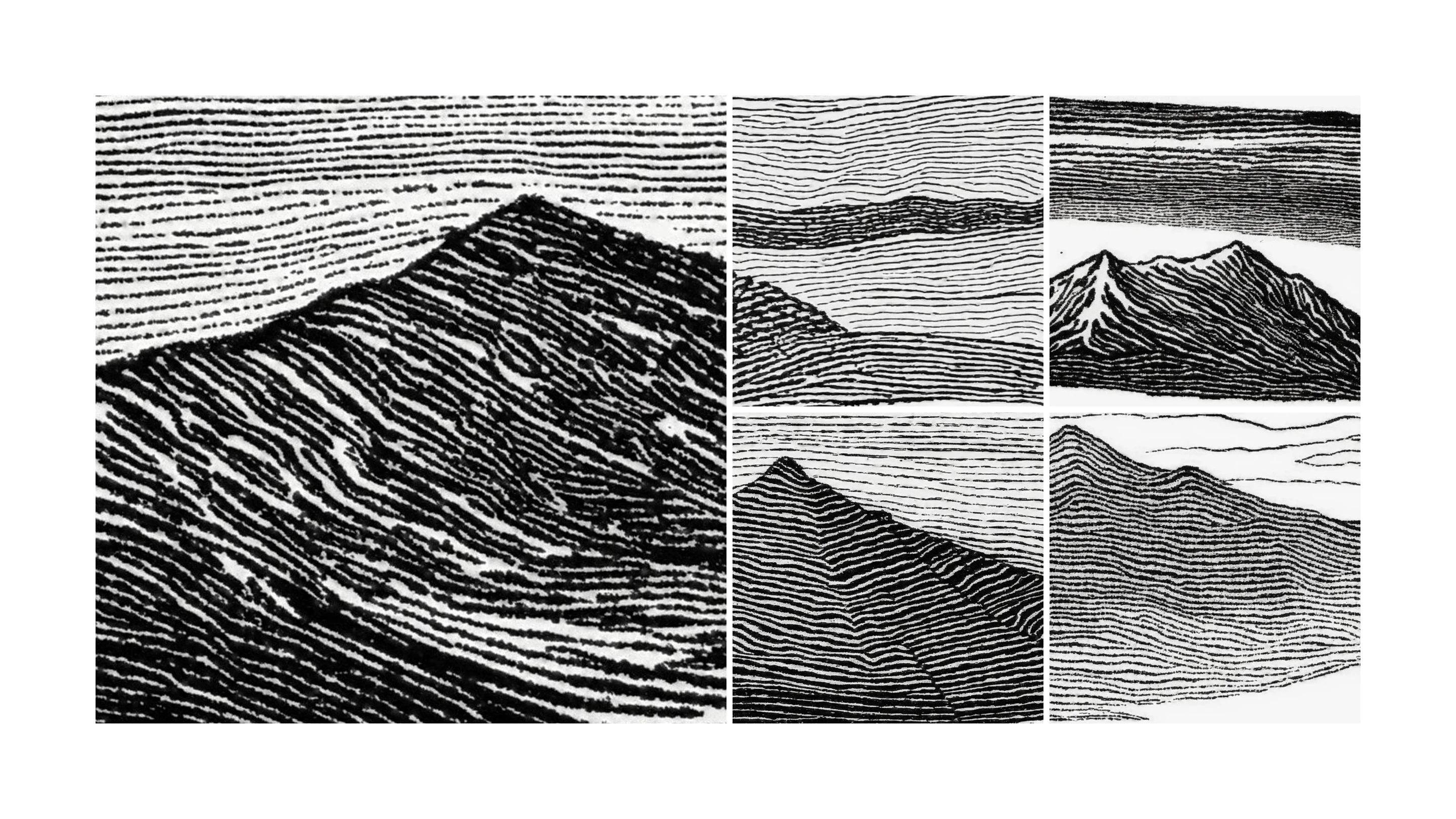
Tim kept experimenting and found that adding "fingerprint" to the first basic prompts got him better results.
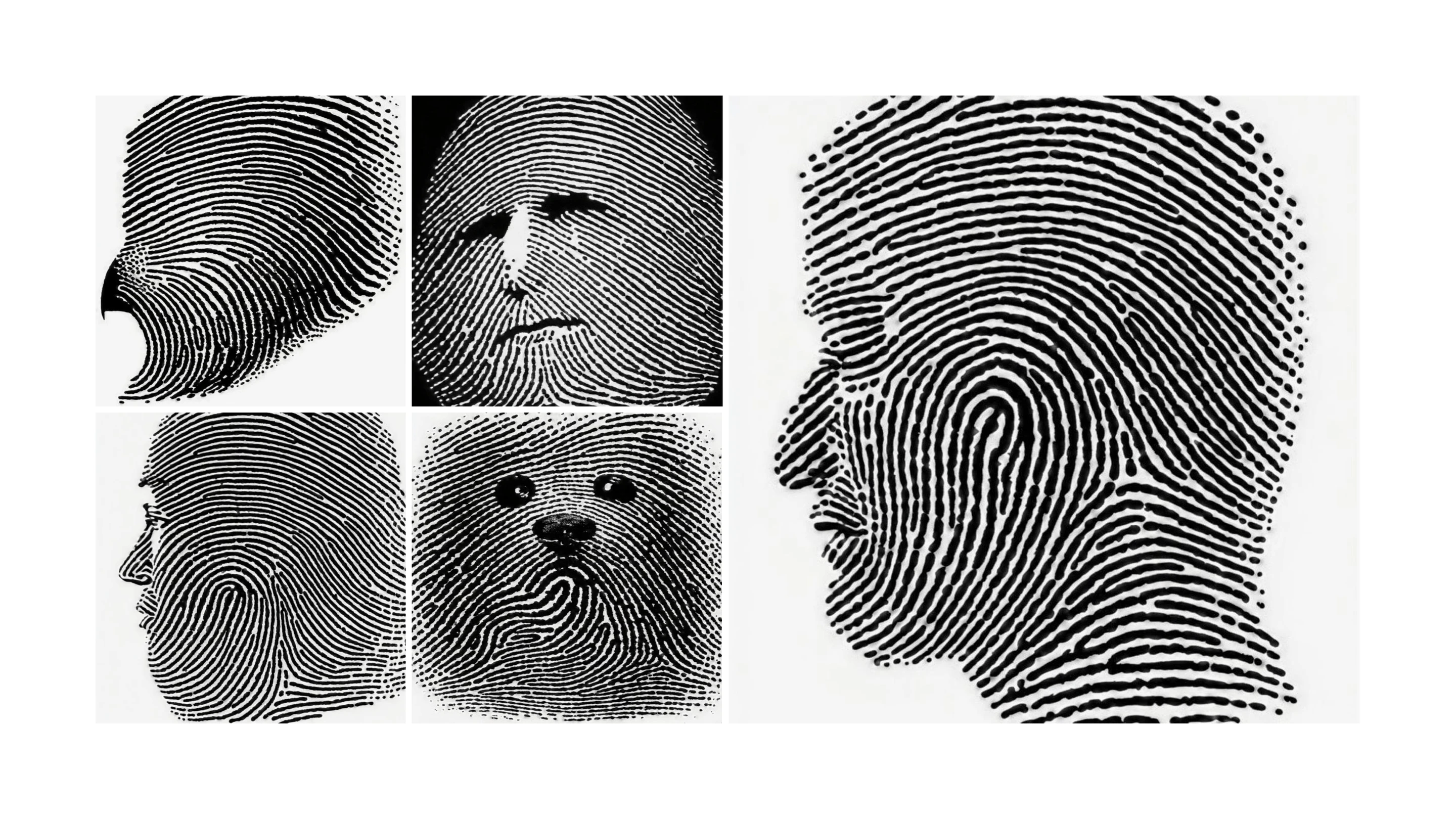
After you find a successful prompt structure, Tim suggests you think about what kinds of subjects would look best in the style of your model. Some styles may lend themselves better to abstract objects, figurative portraits, or landscapes.
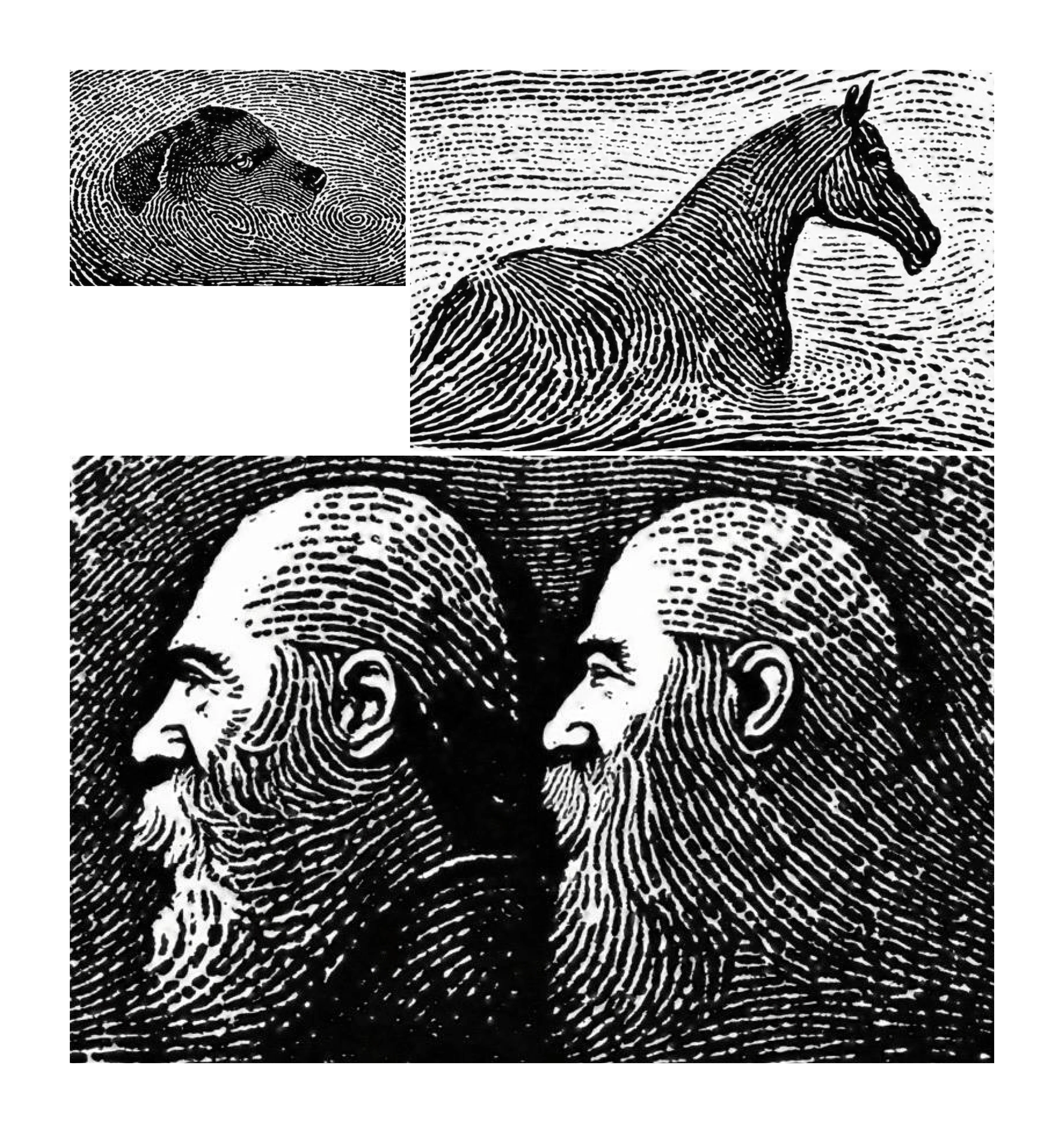
This recipe is the first in a series of recipes Tim has developed to explore the possibilities of exactly. He's focussed on the interesting patterns and textures which surround all of our lives – even the ones which exist at the tip of our fingers. Try training your own model today, then keep working with it to perfect your own recipe.